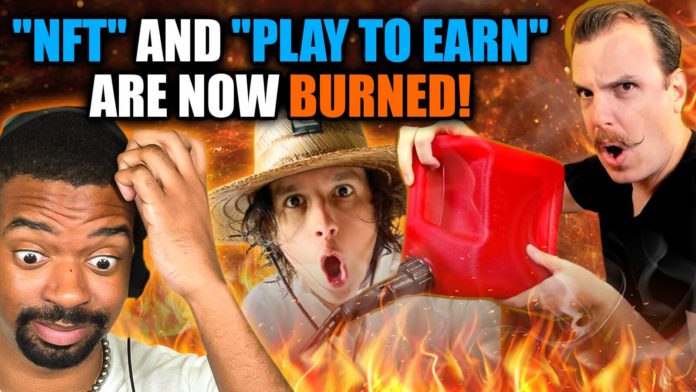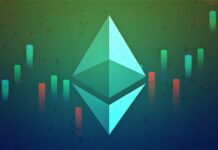Anyone that has spent time in NFT/crypto gaming over the last year or so knows that almost all traditional gamers have no interest in “NFTs.”
You can without a doubt say they straight up hate the idea.
Steam and Minecraft banned them in what could be the most shortsighted move in gaming history.
When a typical gamer has to google “NFT” followed by “fungible” you’re setting yourself up for marketing failure.
“Non-fungible token” appropriately describes what they are but is far too technical and is not familiar enough for most gamers.
Couple this with the myriad of scams and copy/paste jpeg products and you get basically nowhere with the crypto gaming sales pitch.
If You Don’t Understand Bitcoin, You Won’t Understand NFTs
I argue you’re skipping a step when trying to get people to understand an NFT. The idea of digital ownership and scarcity starts with Bitcoin/blockchain, and I would be willing to bet 90% of gamers wouldn’t be able to explain how Bitcoin works.
Seasoned vets take their Bitcoin knowledge for granted and thus forget how handy it is when talking Ethereum, Polygon, smart contracts, and NFT tech.
If you can’t explain the origin, how will you understand NFTs out of the box?
My 2019 explainer video begins the lesson with this approach and you will see almost all comments on the video are positive in regards to “getting it.”
Launching a Game with a Token is a Disaster Waiting to Happen
Launch your game with a token and prepare to get dumped on.
Spend any amount of time pitching a new “play to earn” game to a traditional gamer and they will constantly ask “how much can I earn? per day? per month?”
As a game developer, don’t act like you spent time running the math like Milton Friedman on your inflation schedule, distribution, supply cap, etc.
You’re one comma away from a total meltdown.
Most new players will not care about the gameplay, and will try to get in during an initial token price pump with the intention to dump and move on.
A token, especially for governance, should not be introduced until far into the game’s life cycle. When the game itself has proven to be fun, engaging, and supportive of its community, a token offering gains value.
Old School Example – Warcraft 3 Governance Thought Experiment
As a long time Warcraft 3 player, I often cite it as the perfect example of how player governance might work.
The game is 20 years old and remains very popular. However, Blizzard has all but abandoned updating the game especially after the disastrous WC3 Reforged release.
Players sit around waiting for balance patches that never come.
Instead, player governance could be owned and delegated to the players and influencers most active in the community.
Long time fan favorites like Grubby spend a lot of time making their own balance patch lists.
In a player governance scenario token holders can propose a balance change. The community then votes based on ownership/delegation, and you decide to implement from there.
This kind of player token ownership would have immediate monetary value, and Blizzard could even get a tiny cut of all transactions.
This is because the game has built up tremendous replay value with a fiercely loyal fan base.
Blizzard would likely never implement this kind of change far into the game’s life cycle, but a new game designer should consider how the value comes from long term successful implementation of fun gameplay.
For more on tokenomics, read this thread from last summer during the Axie Infinity craze:
Alternative Game Launch Strategy
Just make an awesome game. Implement the NFT/web3 stuff in the background and don’t make it part of the pitch.
Tag skins, items, and collectibles as “player owned” and showcase what marketplaces accept resales.
Call out instances where interoperability is available, one of the coolest but most challenging applications of NFTs so far.
“This skin is useable in…”
For example, The Sandbox Season 3 has made Bored Apes, Moonbirds, and a number of other community NFTs playable in their game.
I am not really a fan of Bored Ape Yacht Club, but this is at least a cool implementation that showcases utility.
This guy’s Twitter avatar matches his in-game avatar.
What About “Metaverse”
This is a tough one.
I believe there are two definitions:
“multiple metaverses exist” or
“one metaverse exists, and each game/dapp simply plugs into it.”
I tend to think the second is more accurate, considering how NFT interoperability works.
“Entering the metaverse” would mean you have a consistent avatar(s), sign-in name (ENS domain, Unstoppable Domains), across multiple game worlds. Game developers just plug you in to the existing blockchain database.
Entering multiple “metaverses” doesn’t seem any different from what we have been doing for 30 years, as Richard Heart (long time gamer) will tell you.
I’m Building an NFT Game – What Should I Do?
- Don’t use “NFT,” “play to earn,” “play and earn,” or “web3” in direct marketing language to players. One exception is developer documentation. Another exception might be if you are at a conference specific to Web3 games.
- Player onboarding should offer seamless wallet creation at first, which allows self-custody if the player is knowledgeable enough. Example – Splinterlands, WAX
- Use “player owned” or “collectible” should you need to describe an NFT item in more subtle way.
- Focus on co-marketing with other NFT games and take The Sandbox Game approach by weaving in interoperability from outside NFT projects. The early Enjin thesis also revolved around this idea.
Credit: Source link






















 Bitcoin
Bitcoin  Ethereum
Ethereum  Tether
Tether  Solana
Solana  USDC
USDC  XRP
XRP  Lido Staked Ether
Lido Staked Ether  Dogecoin
Dogecoin  Toncoin
Toncoin  Cardano
Cardano  Shiba Inu
Shiba Inu  Avalanche
Avalanche  Wrapped Bitcoin
Wrapped Bitcoin  Polkadot
Polkadot  Bitcoin Cash
Bitcoin Cash  TRON
TRON  Chainlink
Chainlink  NEAR Protocol
NEAR Protocol  Internet Computer
Internet Computer  Polygon
Polygon  Litecoin
Litecoin  Uniswap
Uniswap  LEO Token
LEO Token  Dai
Dai  Stacks
Stacks  Aptos
Aptos  Ethereum Classic
Ethereum Classic  Mantle
Mantle  First Digital USD
First Digital USD  Render
Render  Filecoin
Filecoin  Cronos
Cronos  Immutable
Immutable  Cosmos Hub
Cosmos Hub  Stellar
Stellar  Bittensor
Bittensor  OKB
OKB  Renzo Restaked ETH
Renzo Restaked ETH  Hedera
Hedera  Arbitrum
Arbitrum  XT.com
XT.com  Pepe
Pepe  The Graph
The Graph  dogwifhat
dogwifhat  Maker
Maker  Optimism
Optimism  Fetch.ai
Fetch.ai 
